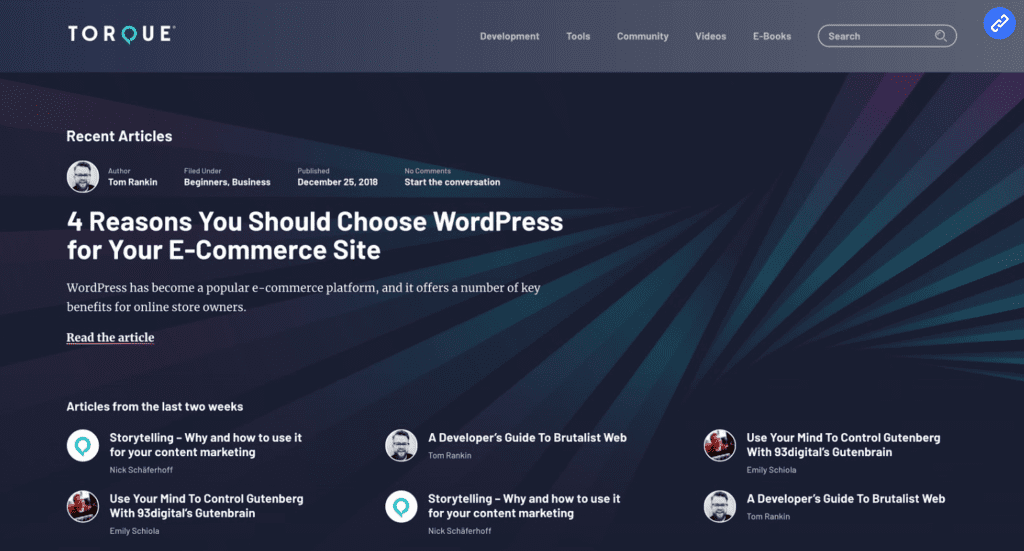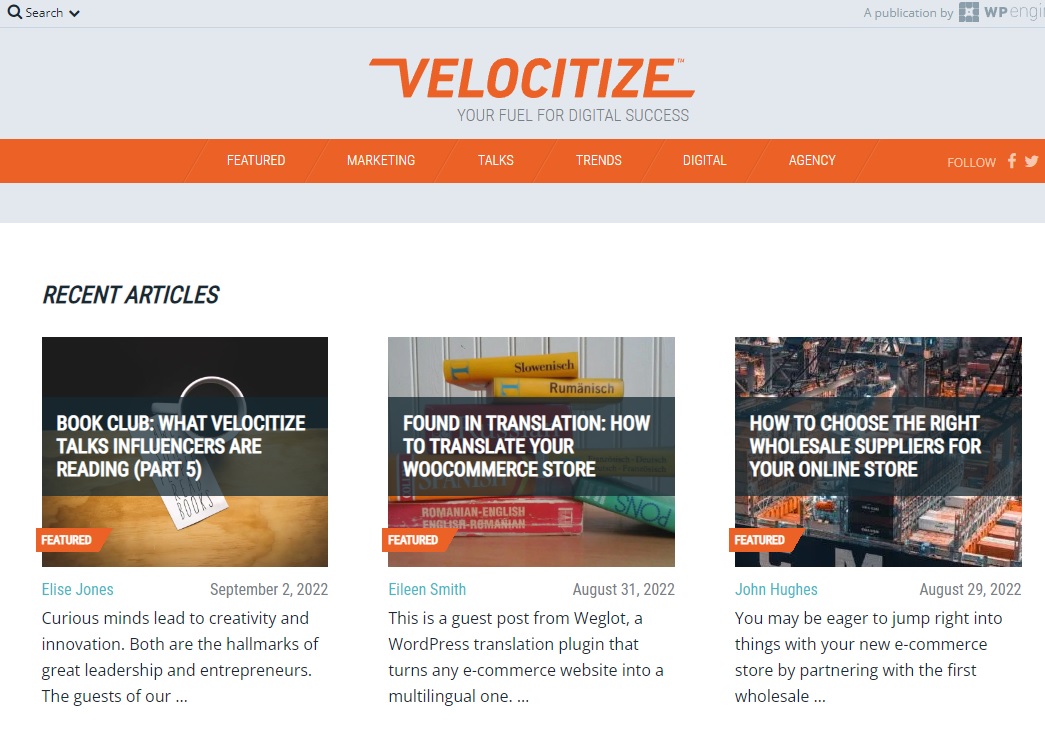With so much negative coverage of news publishing, we at Bibblio wanted to shine a spotlight on the many vertical publishers that are thriving. So we created an interview series called “Vertical Heroes”.
In this fourth edition, Torque Magazine‘s editor Emily Schiola dives into being at the forefront of news and events in the WordPress community since 2013. Emily told Bibblio CEO Mads Holmen about recirculation numbers, the hugeness of SEO and how embracing your niche community is key.
Mads: who are your publication’s target audience?
Emily: These are WordPress developers and beginners.
Mads: what different types of content are you offering to the wordpress community?
E: We offer advanced tutorials, plugin roundups, interviews with members of the community, case studies, weekly news videos, editorial cartoons, and more.
Mads: how large is torque magazine in terms of staff?
E: Torque only has two full-time members on staff. Myself and our Video Producer/Graphic Designer/Cartoonist Doc Pop. We’re a small team but we put out videos, editorial cartoons, and articles every week. We also have two consistent writers and reach out to community members and leaders in the industry to supplement other content.
Mads: with few hands you’ve still managed to grow to 500k page views a month currently. What has been the secret sauce?
E: One of the biggest tools at Torque’s disposal is the robust WordPress community. There are hundreds of experts all willing to share their experience. This has allowed us to increase our publishing schedule and cover a wider range of topics. We also make a point of really looking at which keywords are performing well and which aren’t to try to anticipate what readers want.
Mads: how do you prioritize attracting new audiences vs. Engaging existing users deeper?
E: Most of our audience comes from search engines. It’s people that are looking up problem solutions while building their websites. Because of that, our new reader numbers are very strong. Though we love being a resource for people looking for help to specific problems, we also want people to return week after week. At the moment we are putting more energy into cultivating some of these one time readers into lifelong fans.
Mads: how are you retaining your audiences? Turning visitors into regulars – to fans!
E: One of the ways we’ve been working to turn visitors into regulars is to be aggressive about internal linking. The more content you can lead someone to, the longer they will stay on your website.
Mads: what’s the key audience metrics you define success by?
E: The biggest number we look at is of course, page views. That’s the easiest way to see if something is performing or not. Every month I look at how well an author, specific article, or topic is doing and use that to plan future articles. Another metric I love is the Recirculation Percentage. This looks at the number of returning site visitors. This is a big indicator of which days of the week have less engagement typically. By using this number, I’ve adjusted our publishing schedule from every week day to Tuesday-Thursday. This change has already made an impact.
Mads: could you explain what seo means to you these days?
E: SEO is huge for us. As I said before, a lot of our traffic comes from search engines. SEO, of course, plays a huge part in this. Something we focus on in particular is keywords. We do a lot of research to see which keywords are performing as well as which ones we are missing out on.
Mads: what’s you media strategy, and how important is it for you to be present on those platforms? What’s the newest trend you’re seeing?
E: Our social strategy is to get our content, evergreen and new, in front of as many users as we can – sharing multiple times a day across our social channels. We share our content primarily on Twitter and Facebook, and occasionally on a few other platforms like Reddit or Instagram.
Social trends are constantly evolving to keep up with ever-changing algorithms. One new trend that I’ve been seeing is more brands aiming to be approachable and “real” through their social copy. Video content still thrives across all social platforms, so a good strategy would be to incorporate this trend in your videos.
Mads: how do you drive engagement when readers land on your site?
E: Little things like linking other articles right at the top, or adding a call to action at the bottom go a long way for getting people to interact more with the website. We see a difference on comments on articles that have a call to action and those that don’t. People need to be reminded to speak up.
Another thing we try to do is respond to as many comments as possible. People don’t want to feel like they are just shouting into the void. Showing other readers that you’re listening goes a long way for getting them to comment more often. Sometimes I jump in and answer a question or make a connection but our writers are very good at following up with their readers and continuing to educate.
Content from our partners
Mads: do you work together with other publications in your vertical?
E: Torque’s sister publication, Velocitize, is geared toward marketers and CMOs. We are often able to collaborate on a topic to cover from different angles. For example we were tasked with covering a study on the digital habits of Gen Z. Velocitize looked at it from the perspective of the best ways to market to this group, while Torque directed an article at site builders. It is a great way to offer readers more resources.
 Mads: would you describe torque magazine as data-driven?
Mads: would you describe torque magazine as data-driven?
E: We are absolutely data-driven. As I said above, data moves our content strategy. If our numbers are telling us to hit a topic harder or back off we do that. We want to be as relevant as possible and the best way to do that is to listen to what your readers are telling you through data. I think the tools we have now are incredibly advanced on drilling down to when someone leaves an article, but it would be great to get a better idea.
Mads: from your own journey with torque, what do you think other vertical publishers could learn?
E: The biggest tool at our disposal is the people who are using the platform we write about. No matter how broad or niche a publication’s focus is, there’s always an untapped community waiting to share their expertise. Having dedicated writers is necessary to keep any publication alive, but be open to the idea of guest posts or interviews. It’s the best way to make sure you’re covering parts of your topic you might not even know about.
Mads: which other publishers do you look to for inspiration?
I really love WP Beginner. They are a great place for educational content about WordPress. I also really love National Geographic and The Atlantic for their long-form storytelling.








 Mads: would you describe torque magazine as data-driven?
Mads: would you describe torque magazine as data-driven?



